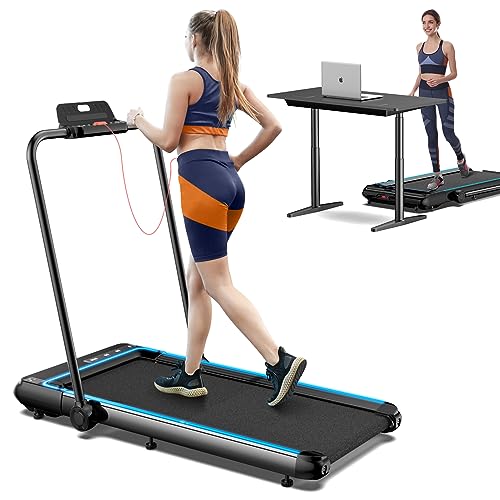Treadmills: A Comprehensive Guide to Understanding Their Functionality, Benefits, and Appropriate Selection
Intro
Treadmills have become a staple in modern-day physical fitness routines, both in homes and gyms worldwide. They offer a practical and efficient way to preserve cardiovascular health, boost endurance, and assist in weight management. This post checks out the different kinds of treadmills, their advantages, functions to consider when acquiring, and some FAQs to assist users in making informed decisions.
Types of Treadmills
When it concerns picking a treadmill, it is crucial to understand the different types offered in the market. Here are the main classifications:
1. Handbook Treadmills
- System: These treadmills have a simple design and rely on the user's efforts to move the belt.
- Pros: More budget friendly, quieter operation, no electrical energy needed.
- Cons: Limited functions, might not provide the very same variety of workout intensity.
2. Motorized Treadmills
- Mechanism: Powered by a motor that drives the belt, allowing users to walk or perform at a set speed.
- Pros: Greater range of speeds and slopes, geared up with various functions such as heart rate screens and workout programs.
- Cons: More expensive and may need more maintenance.
3. Folding Treadmills
- Mechanism: Designed for those with restricted area, these treadmills can be folded for simple storage.
- Pros: Space-saving, typically motorized, versatile functions.
- Cons: May be less durable than non-folding models.
4. Industrial Treadmills
- System: High-quality machines designed for usage in gyms and gym.
- Pros: Built to stand up to heavy usage, advanced functions, typically consist of service warranties.
- Cons: Pricey and not ideal for home use due to size.
5. Curved Treadmills
- System: A distinct design that permits users to move the belt utilizing their own energy.
- Pros: Offers a more natural running experience, promotes much better running kind.
- Cons: More costly and can be noisier.
| Treadmill Type | Pros | Cons |
|---|---|---|
| Handbook | Affordable, no electrical power needed | Restricted features |
| Motorized | Variety of speeds, advanced functions | Upkeep needed |
| Folding | Space-saving, frequently motorized | May lack durability |
| Industrial | Constructed to last, professional-grade features | Pricey |
| Curved | Natural running experience, promotes excellent form | Greater rate |
Benefits of Using Treadmills
Treadmills offer numerous benefits that can contribute to one's overall health and wellness objectives. Some of these advantages consist of:
- Convenient Workouts: Treadmills allow users to exercise inside your home no matter weather condition conditions.
- Cardiovascular Health: Regular usage can improve heart health by increasing stamina and promoting healthy circulation.
- Weight Management: Effective for burning calories, which aids in weight reduction and management.
- Customizable Workouts: Users can control speed, slope, and period to develop personalized exercise experiences.
- Security: Treadmills supply a predictable surface, minimizing the threat of falls compared to outside running.
- Multifunctional: Many treadmills featured functions like heart rate displays, workout programs, and even entertainment systems.
Selecting the Right Treadmill
When selecting a treadmill, possible buyers should consider several crucial aspects:
Features to Consider:
- Motor Power: Typically determined in horsepower (HP), a motor strength of at least 2.5 HP is suggested for serious runners.
- Belt Size: A longer and wider belt accommodates different stride lengths, providing comfort during exercises.
- Incline Settings: Adjustable slope functions simulate outside hill running and can increase exercise strength.
- Weight Capacity: Ensure the treadmill can support the user's weight for safety and durability.
- Console Features: Look for user-friendly dashboards, exercise programs, and Bluetooth compatibility for streaming music or other functions.
Budget plan Considerations
- Under ₤ 500: Entry-level manual treadmills appropriate for casual walkers.
- ₤ 500 - ₤ 1,500: Mid-range motorized treadmills that use more features and much better durability.
- ₤ 1,500 - ₤ 3,000: High-end designs with innovative innovation, larger motors, and longer guarantees.
- Over ₤ 3,000: Commercial-grade treadmills ideal for frequent use in health clubs or training centers.
Regularly Asked Questions (FAQs)
1. How frequently should I use a treadmill?
It is suggested to use a treadmill at least 3 to 5 times a week, including various intensity levels for best results.
2. Can I drop weight by using a treadmill?
Yes, constant use of a treadmill can contribute to weight reduction, especially when combined with a well balanced diet and strength training.
3. What is this contact form to walk on a treadmill for novices?
A speed of 3 to 4 miles per hour is an appropriate variety for novices. It's important to start sluggish and slowly increase rate as convenience and endurance improve.
4. Do I require to use a treadmill if I currently run outdoors?
Utilizing a treadmill can supply additional advantages, such as regulated environments and varied exercises (slope, periods) that are not always possible outdoors.
5. How do I maintain my treadmill?
Routine upkeep includes lubricating the belt, cleaning the deck and console, and inspecting the motor for optimal performance.
Treadmills are necessary tools for those looking to boost their fitness levels in a controlled and convenient way. With numerous types offered, understanding their functions and benefits is essential for making a notified purchase. By considering personal workout needs, space accessibility, and budget plan constraints, individuals can find the most ideal treadmill that fits their way of life. Integrating treadmill exercises into a well balanced fitness regimen can result in improved health outcomes and a pleasurable exercise experience.

